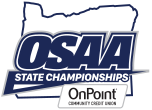
FOR IMMEDIATE RELEASE Contact: Theresia Wynns
INDIANAPOLIS, IN (May 11, 2020) — Beginning next year, high school basketball rules will further clarify when a contest is to be forfeited, including if a qualified individual is not present to coach.
A proposal for a national rule mandating a shot clock as well as a proposal to allow a shot clock by state adoption were not approved.
“Information was given to the Basketball Rules Committee that shared the votes in individual states on how coaches and officials voted in support of or non-support of the shot clock rule,” said Theresia Wynns, NFHS director of sports and liaison to the Basketball Rules Committee. “The conversation among the committee members explored the pros and cons of enacting the proposal as a rule for all states and likewise for state adoption. The committee will continue to explore the shot clock issue.”
These were among the topics discussed by the National Federation of State High School Associations (NFHS) Basketball Rules Committee at its annual meeting April 14-16. The rules meeting was held in an online format to comply with current health safety guidelines. All recommendations were subsequently approved by the NFHS Board of Directors.
Rule 5-4-1 was one of three rules updated by the committee. It now states that a game is declared a forfeit if a coach is removed from the contest for unsporting conduct and no authorized school personnel are present to assume responsibility of the team.
“Most states have bylaws to cover the instance when no adult school staff is on the bench to attend to the team. Officials are not likely to read those bylaws and consequently not know that rule,” Wynns said. “Having the basketball rules cover such a situation helps the contest officials and coaches alike if such a situation were to arise.”
Rule 10-6-1 Penalty was also amended to clarify that an official is not required to provide a warning to a coach before a technical foul is given.
“This amends an existing rule that gave the impression that a warning was a prerequisite to ruling a technical foul,” Wynns. “Using the word ‘may’ helps one to understand that a warning is only an option.”
A timer’s responsibilities were addressed in Rule 2-12-5 when a player is disqualified or injured. A warning signal is sounded to begin a 15-second interval to replace a disqualified or injured player. A second warning signal was added when the 15 seconds expires to prepare teams for the resumption of play.
A complete listing of the basketball rules changes will be available on the NFHS website at www.nfhs.org. Click on “Activities & Sports” at the top of the home page and select “Basketball.”
According to the 2018-19 NFHS High School Athletics Participation Survey, a total of 540,769 boys participated in basketball in 18,617 schools, and 399,067 girls participated in the sport in 18,210 schools across the country. It is the third-most popular sport for boys and girls.
###
About the National Federation of State High School Associations (NFHS)
The NFHS, based in Indianapolis, Indiana, is the national leadership organization for high school sports and performing arts activities. Since 1920, the NFHS has led the development of education-based interscholastic sports and performing arts activities that help students succeed in their lives. The NFHS sets direction for the future by building awareness and support, improving the participation experience, establishing consistent standards and rules for competition, and helping those who oversee high school sports and activities. The NFHS writes playing rules for 17 sports for boys and girls at the high school level. Through its 50 member state associations and the District of Columbia, the NFHS reaches more than 19,500 high schools and 12 million participants in high school activity programs, including more than 7.9 million in high school sports. As the recognized national authority on interscholastic activity programs, the NFHS conducts national meetings; sanctions interstate events; offers online publications and services for high school coaches and officials; sponsors professional organizations for high school coaches, officials, speech and debate coaches, and music adjudicators; serves as the national source for interscholastic coach training; and serves as a national information resource of interscholastic athletics and activities. For more information, visit the NFHS website at www.nfhs.org.
MEDIA CONTACTS: Bruce Howard, 317-972-6900
Director of Publications and Communications
National Federation of State High School Associations
Chris Boone, 317-972-6900
Assistant Director of Publications and Communications
National Federation of State High School Associations









